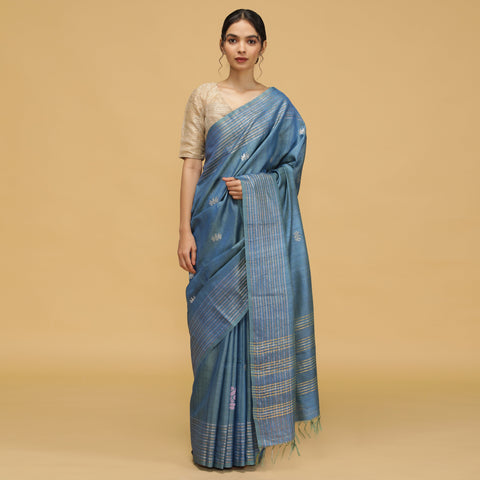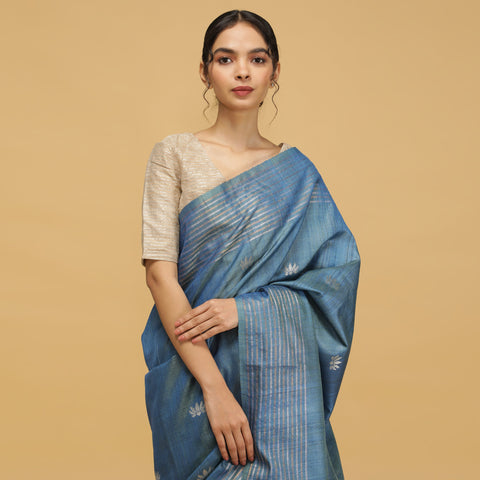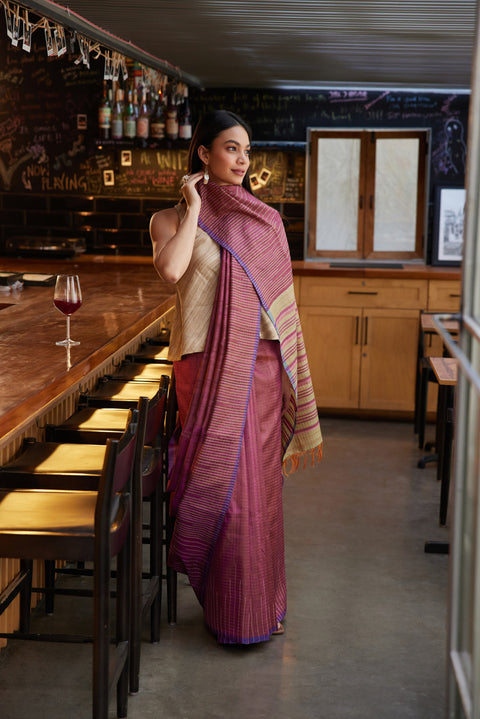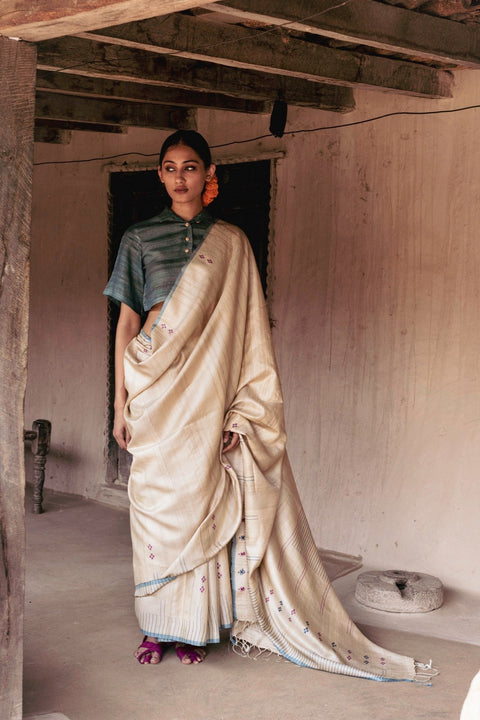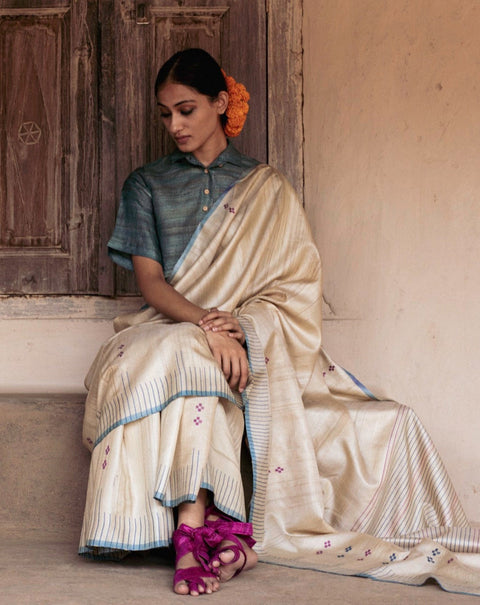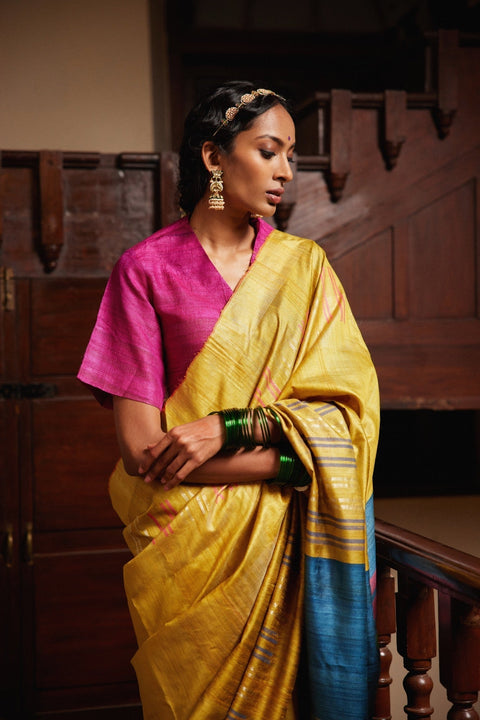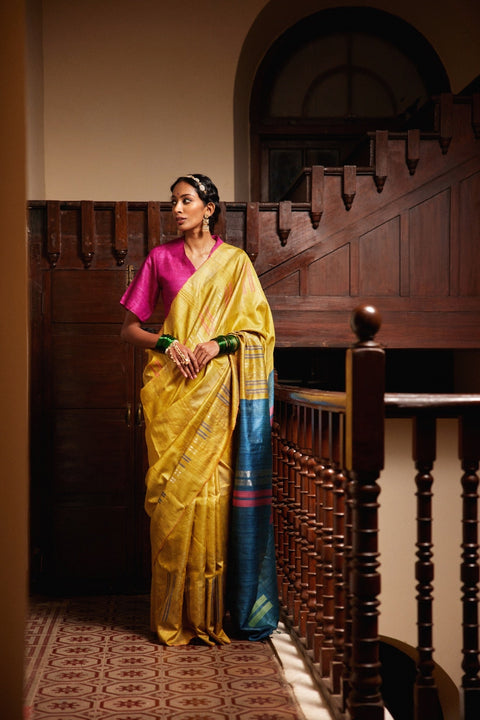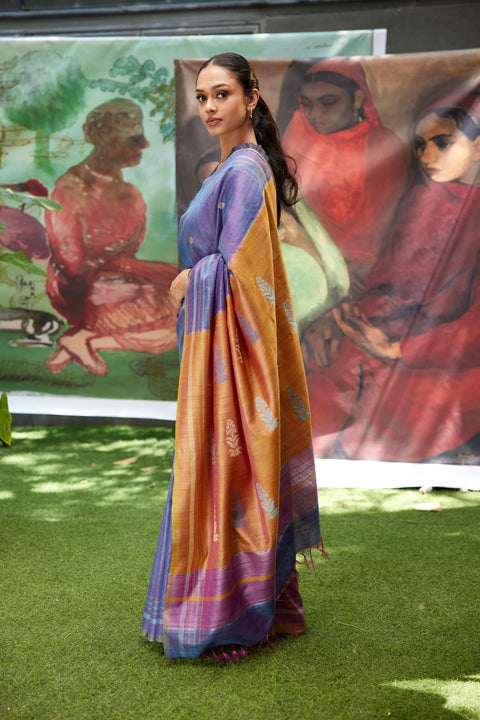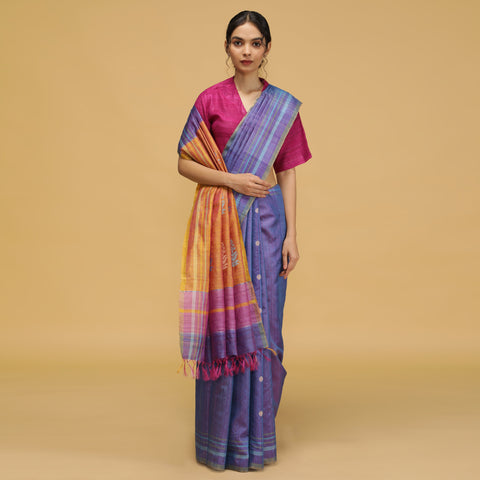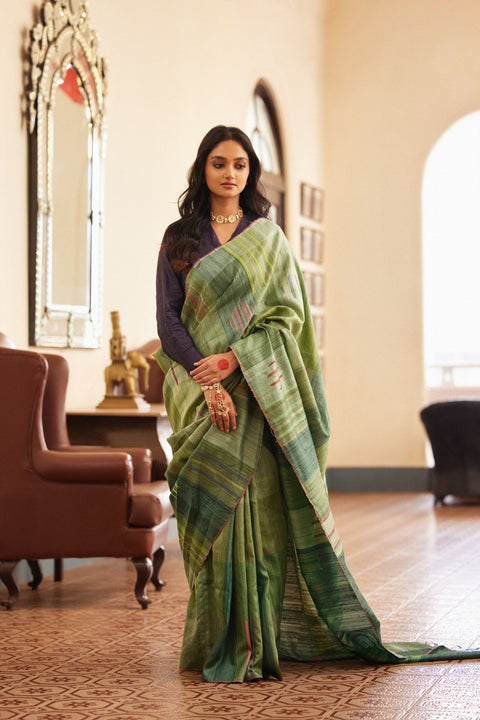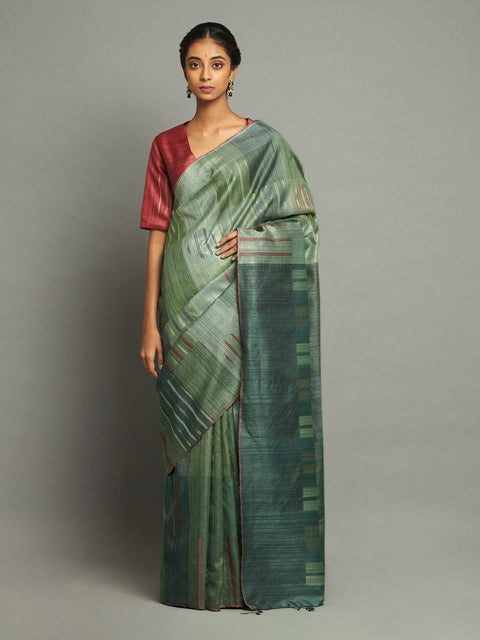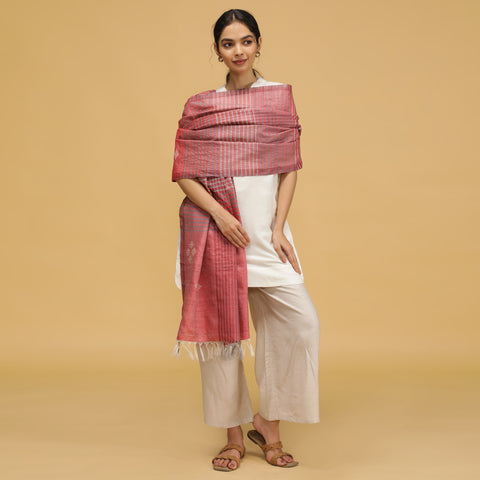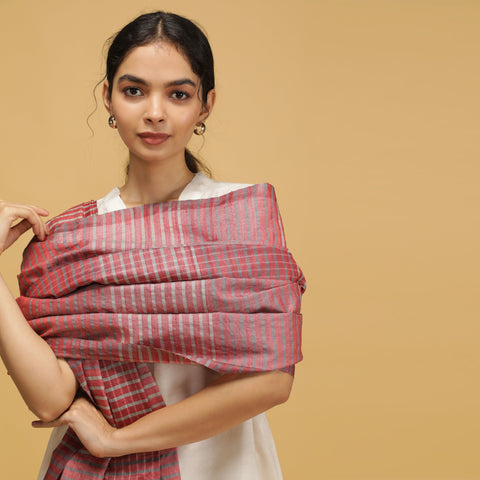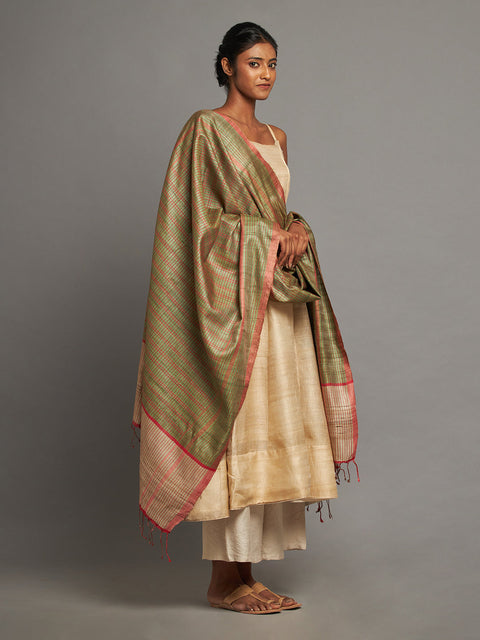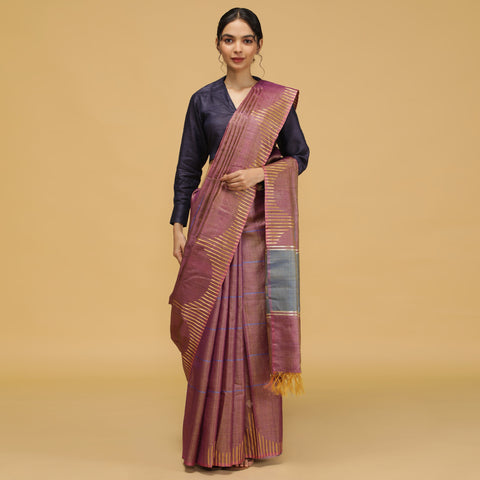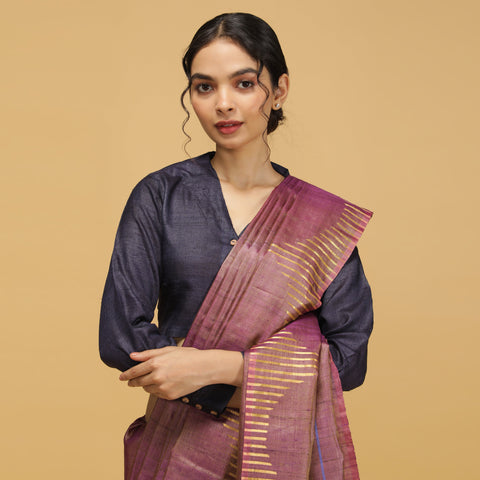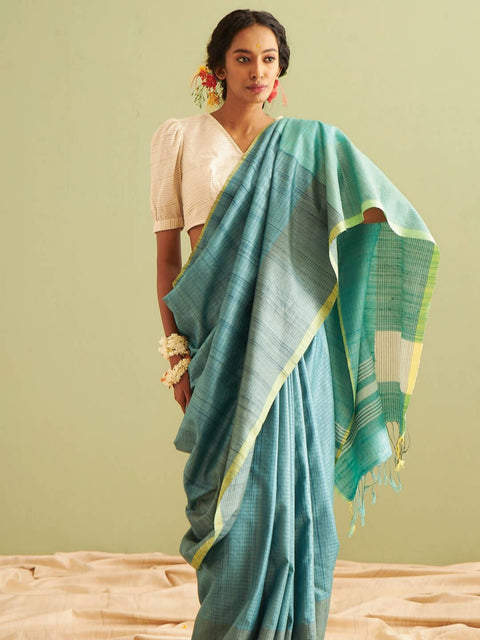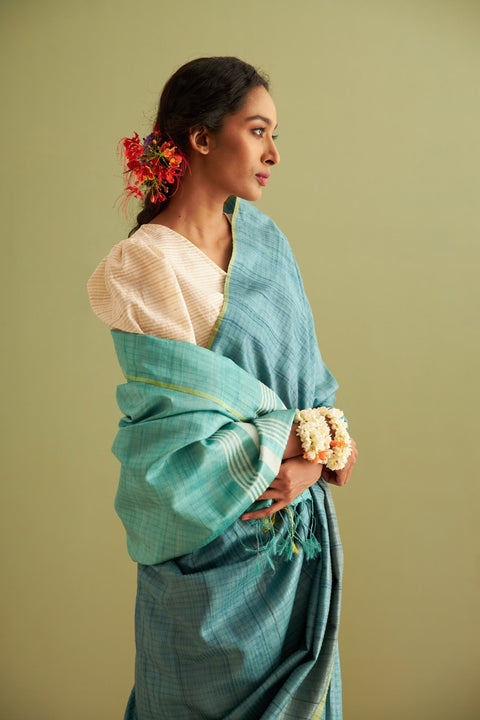
Table of Contents
The Truth About Silk: Simple Tricks to Identify a Pure Silk Saree

Table of Contents
Silk sarees have an unmatched charm, a luxurious drape, and a timeless elegance. Whether it’s a wedding, festival, or grand celebration, nothing beats the grace of a premium silk saree. But with so many imitations flooding the market, how do you make sure you're getting the real deal? If you’ve ever wondered how to identify pure silk saree, you’re not alone.
Fake silk sarees can look stunning at first glance, but the quality, durability, and feel of pure silk are irreplaceable. Here are some foolproof tricks to help you spot a pure silk saree effortlessly.
1. The Touch Test
One of the easiest ways to determine the authenticity of a silk saree is by feeling the fabric. Pure silk sarees have a soft yet textured feel, with a natural warmth when you touch them. Fake silk, often made from polyester or artificial blends, feels unnaturally smooth and cold.
Try rubbing the fabric between your fingers—pure silk produces a faint rustling sound known as the "scroop" effect. Synthetic silk won’t have this unique sound.
2. The Burn Test
Another key method on how to identify pure silk saree is the burn test. Take a tiny thread from an inconspicuous corner of the saree and burn it carefully:
-
Pure silk smells like burnt hair and turns into a fine powdery ash.
-
Fake silk smells like burnt plastic and forms a sticky residue.
Of course, this isn’t always practical, especially when shopping in a store. But if you own a saree and suspect it isn’t genuine, this test is a reliable way to check.
3. The Ring Test
Ever seen those videos where people pull a saree through a ring? It’s a classic trick to check silk authenticity. A pure silk saree is lightweight and flexible, meaning it should smoothly pass through a ring without much resistance. Artificial silk sarees, being stiffer and heavier, often struggle to pass this test.
4. The Water Absorption Test
If you’re unsure how to identify pure silk saree, try the water absorption test. Place a drop of water on the fabric:
-
If it absorbs quickly, it’s likely real silk.
-
If it forms beads or rolls off, it’s probably synthetic.
5. The Weave and Zari Test
One of the best ways to understand how to identify pure silk saree is by examining the zari work—authentic silk sarees have handwoven patterns with slight irregularities.
-
Traditional pure silk bridal sarees often come with intricate zari work, made from real gold or silver threads. Flip the saree and examine the back:
-
Pure silk sarees have handwoven designs, with slight irregularities in the weave.
-
Machine-made or fake silk sarees have uniform, flawless patterns and a synthetic feel.
You can also scratch the zari with your fingernail—real zari turns silver, while fake zari stays golden due to its plastic coating.
6. The Fragrance Test – The Scent of Authenticity
Silk is a natural fibre derived from silkworms. If you slightly dampen a pure silk saree, it gives off a mild organic smell, much like raw silk threads. Artificial silk lacks this characteristic scent.
7. Brand and Certification – The Ultimate Assurance
When in doubt, always buy from trusted sellers who offer Silk Mark certification. This guarantees the authenticity of your saree. For instance, Kosa silk sarees carry geographical indicators (GI tags) that verify their originality.
Takeaway
Spotting an authentic silk saree is easier than you think! Now that you know how to identify pure silk saree, you can confidently shop for the real deal without falling for cheap imitations. Whether you’re investing in a pure silk bridal saree or adding a stunning pure Kosa silk saree to your collection, these tricks will ensure you always choose authenticity over artificiality.
Ready to shop for your next premium silk saree? With these simple tricks, you’ll never be fooled by fake silk again!







